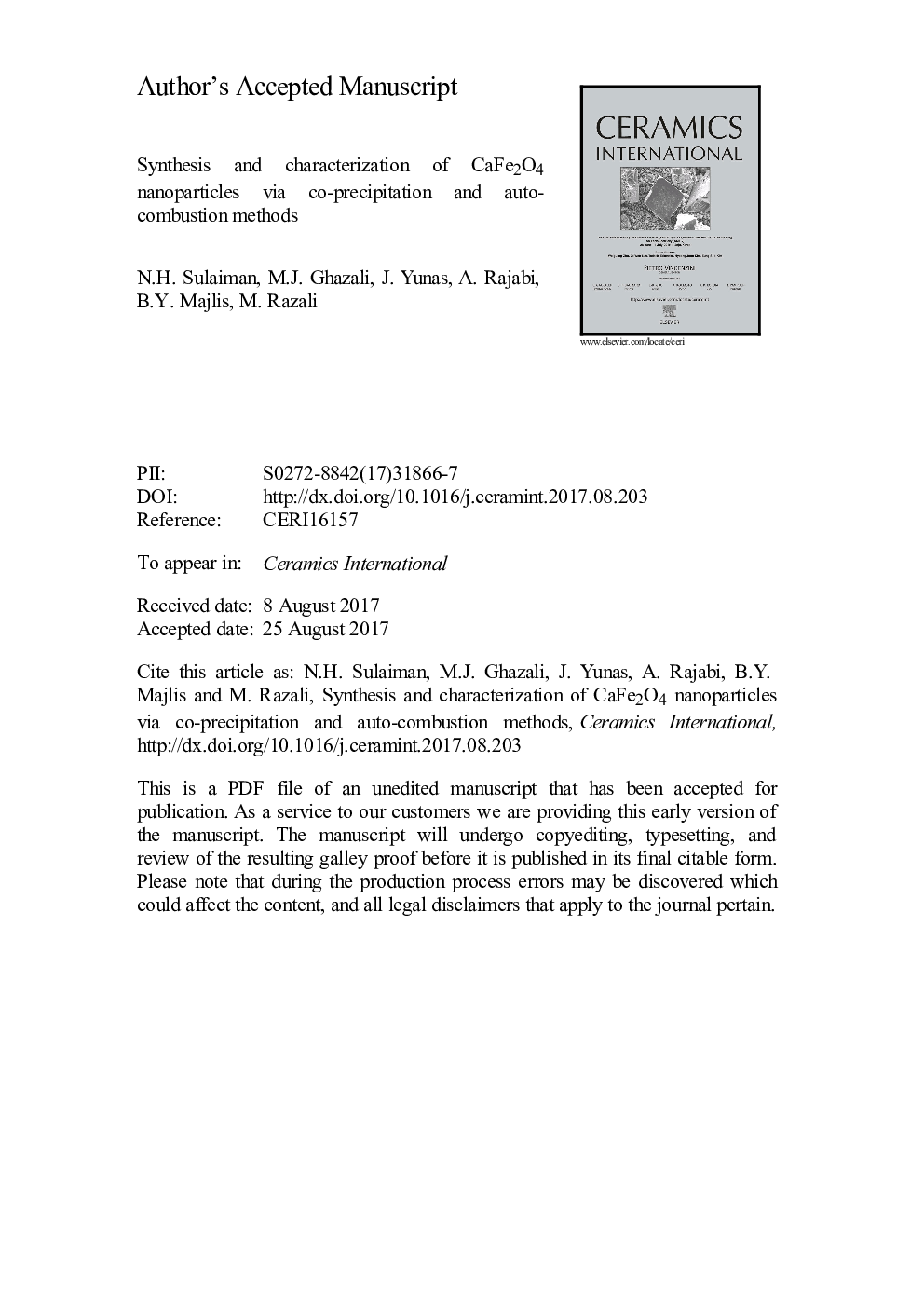| کد مقاله | کد نشریه | سال انتشار | مقاله انگلیسی | نسخه تمام متن |
|---|---|---|---|---|
| 7888687 | 1509797 | 2018 | 20 صفحه PDF | دانلود رایگان |
عنوان انگلیسی مقاله ISI
Synthesis and characterization of CaFe2O4 nanoparticles via co-precipitation and auto-combustion methods
دانلود مقاله + سفارش ترجمه
دانلود مقاله ISI انگلیسی
رایگان برای ایرانیان
کلمات کلیدی
موضوعات مرتبط
مهندسی و علوم پایه
مهندسی مواد
سرامیک و کامپوزیت
پیش نمایش صفحه اول مقاله

چکیده انگلیسی
In this paper, the techniques for the synthesis of CaFe2O4 nanoparticles using the auto-combustion and co-precipitation methods are discussed. The effects of both methods on the microstructure and magnetic properties of the CaFe2O4 nanoparticles were compared. The CaFe2O4 powder was obtained after drying the synthesized sample via co-precipitation overnight in an oven at 80 °C. For auto-combustion method, the sol that was initially formed was gradually converted into a gel, which was then combusted at 250 °C. Finally, the CaFe2O4 nanoparticles were calcined at 550 °C. The different synthesis methods produced nanoparticles with different physical and magnetic properties in order to find an optimum size to be utilized for drug delivery applications. The results of the X-ray diffraction showed that both processes produced nanocrystals with an orthorhombic crystalline structure. It was noted from the measurements made with a transmission electron microscope (TEM) that the synthesis using the co-precipitation method produced nanoparticles with a size of about 10-20 nm, which was comparable with the size that was obtained when the auto-combustion method was used. The magnetic properties were investigated using a vibrating sample magnetometer (VSM), where the magnetic saturation (Ms) of CaFe2O4 for the sample synthesized using the co-precipitation method was 47.279 emu/g, which was higher than the magnetic saturation (Ms) of 31.10 emu/g obtained when the auto-combustion method was used. The hysteresis loops (Hc) for the samples were 17.380 G and 6.1672 G, respectively. Additionally, the elaborate properties mentioned above, such as the size and superparamagnetic properties of the synthesized CaFe2O4 nanoparticle size, were the characteristics required for drug delivery because the targeted therapy required nanoparticles with good magnetic properties, a suitable size, and which were non-toxic in order to have a potential application in targeted drug delivery systems.
ناشر
Database: Elsevier - ScienceDirect (ساینس دایرکت)
Journal: Ceramics International - Volume 44, Issue 1, January 2018, Pages 46-50
Journal: Ceramics International - Volume 44, Issue 1, January 2018, Pages 46-50
نویسندگان
N.H. Sulaiman, M.J. Ghazali, J. Yunas, A. Rajabi, B.Y. Majlis, M. Razali,